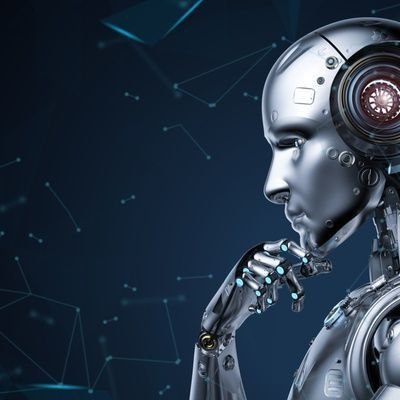
Robotic exoskeletons, also known as powered exoskeletons or exosuits, are wearable devices that augment human capabilities by providing support, strength, and endurance. These devices, which are often equipped with motors, sensors, and artificial intelligence, can enhance mobility, reduce physical strain, and enable users to perform tasks that would otherwise be difficult or impossible. Over the past few years, robotic exoskeletons have seen significant advancements, making them increasingly viable for a wide range of applications, from medical rehabilitation to industrial use. This article explores the various applications and benefits of robotic exoskeletons, highlighting how they are transforming lives and industries.
What Are Robotic Exoskeletons?
Robotic exoskeletons are wearable devices that fit over the user’s body, typically covering the legs, arms, or the entire body. These devices are designed to work in harmony with the wearer’s movements, providing mechanical assistance or resistance to help with specific tasks. The exoskeleton can either amplify the user’s physical capabilities or provide support for those with limited mobility.
Exoskeletons are powered by various means, including electric motors, hydraulics, or a combination of both. They are often equipped with sensors that monitor the user’s movements and intentions, allowing the device to respond in real-time to enhance or support the user’s actions. Some exoskeletons also incorporate artificial intelligence to adapt to the user’s needs and optimize performance.
Applications of Robotic Exoskeletons
Robotic exoskeletons have a wide range of applications across various fields. Here are some of the most prominent areas where exoskeletons are making a significant impact:
1. Medical and Rehabilitation
One of the most significant applications of robotic exoskeletons is in the medical field, particularly in rehabilitation for individuals with mobility impairments. Exoskeletons are being used to assist patients recovering from strokes, spinal cord injuries, or other conditions that affect movement.
Stroke Rehabilitation
Stroke survivors often experience partial paralysis or weakness on one side of the body, making it difficult to walk or perform everyday tasks. Robotic exoskeletons can provide the necessary support and guidance to help these patients regain their mobility. By using an exoskeleton, patients can practice walking with proper gait patterns, which can accelerate their recovery and improve their overall quality of life.
Spinal Cord Injury Rehabilitation
For individuals with spinal cord injuries, robotic exoskeletons offer the possibility of walking again. These devices can provide support and movement to the lower limbs, allowing users to stand, walk, and even climb stairs. Regular use of an exoskeleton can help prevent muscle atrophy, improve circulation, and reduce the risk of secondary health issues, such as pressure sores or osteoporosis, that are common in individuals with limited mobility.
Elderly and Disabled Assistance
Robotic exoskeletons are also being developed to assist the elderly and individuals with disabilities in maintaining their independence. These devices can provide support for walking, standing, and performing daily activities, allowing users to live more independently and reducing the need for caregivers.
2. Industrial and Workplace Applications
In industrial and workplace settings, robotic exoskeletons are being used to reduce the physical strain on workers and enhance their productivity. These exoskeletons are particularly valuable in industries that require heavy lifting, repetitive motions, or extended periods of standing or bending.
Manual Labor and Heavy Lifting
Workers in construction, manufacturing, and logistics often face the challenge of lifting heavy objects, which can lead to fatigue, injury, and long-term musculoskeletal disorders. Robotic exoskeletons can provide the necessary support and strength to help workers lift and move heavy objects with ease, reducing the risk of injury and improving overall safety.
Ergonomic Support
Exoskeletons can also provide ergonomic support for workers who perform repetitive tasks or work in awkward positions for extended periods. For example, exoskeletons designed for overhead work can reduce the strain on a worker’s shoulders and arms, allowing them to perform tasks more comfortably and efficiently. This can lead to increased productivity, reduced absenteeism due to injury, and lower healthcare costs for employers.
3. Military and Defense
The military has been an early adopter of robotic exoskeleton technology, recognizing its potential to enhance the capabilities of soldiers in the field. Exoskeletons can provide soldiers with increased strength, endurance, and mobility, enabling them to carry heavier loads, move faster, and operate in challenging environments.
Load-Carrying Assistance
One of the primary applications of exoskeletons in the military is load-carrying assistance. Soldiers often carry heavy backpacks, weapons, and equipment, which can lead to fatigue and injury. Exoskeletons can distribute the weight more evenly and provide mechanical assistance, allowing soldiers to carry heavier loads over longer distances with less effort.
Enhanced Mobility and Endurance
Exoskeletons can also enhance a soldier’s mobility and endurance, enabling them to move more quickly and efficiently across difficult terrain. This increased mobility can be critical in combat situations, where speed and agility can make the difference between success and failure.
4. Healthcare and Nursing
In healthcare settings, robotic exoskeletons are being used to assist nurses and caregivers with physically demanding tasks, such as lifting and transferring patients. These tasks often require significant physical effort and can lead to injury, particularly in older or smaller caregivers.
Patient Lifting and Transfer
Exoskeletons designed for healthcare workers can provide the necessary support to lift and transfer patients safely, reducing the risk of injury to both the caregiver and the patient. This can improve the quality of care, reduce the physical strain on healthcare workers, and lower the incidence of work-related injuries.
Assisted Mobility for Patients
In addition to assisting healthcare workers, exoskeletons can also be used to help patients with limited mobility move around the hospital or rehabilitation center. This can reduce the need for wheelchairs and improve the patient’s overall experience during their recovery.
5. Personal Mobility and Daily Assistance
Robotic exoskeletons are also being developed for personal use, providing individuals with mobility impairments the ability to perform daily activities independently. These devices can help users walk, stand, and move around their homes and communities, improving their quality of life and increasing their independence.
Personal Mobility
For individuals with paralysis or other mobility impairments, personal exoskeletons offer the possibility of walking again. These devices can be customized to the user’s needs, providing support and assistance for walking, standing, and sitting. This can help users regain their independence and reduce their reliance on wheelchairs or other mobility aids.
Daily Assistance
Exoskeletons can also assist with daily tasks, such as reaching for objects, climbing stairs, or getting in and out of bed. By providing mechanical support and assistance, these devices can make it easier for individuals with mobility impairments to perform everyday activities, enhancing their overall quality of life.
Benefits of Robotic Exoskeletons
The use of robotic exoskeletons offers numerous benefits across various applications, from healthcare and rehabilitation to industrial and military use. Here are some of the key benefits:
1. Improved Mobility and Independence
One of the most significant benefits of robotic exoskeletons is their ability to improve mobility and independence for individuals with mobility impairments. Whether used for rehabilitation, personal mobility, or assistance in daily tasks, exoskeletons can help users regain their independence and improve their quality of life.
2. Reduced Risk of Injury
In industrial and healthcare settings, exoskeletons can significantly reduce the risk of injury by providing support and assistance with physically demanding tasks. By reducing the strain on workers and caregivers, exoskeletons can help prevent musculoskeletal disorders, fatigue, and work-related injuries, leading to safer and more productive work environments.
3. Enhanced Productivity
Exoskeletons can enhance productivity in various industries by enabling workers to perform tasks more efficiently and with less effort. For example, workers using exoskeletons for heavy lifting or repetitive tasks can work for longer periods without fatigue, leading to increased output and reduced downtime.
4. Accelerated Rehabilitation
In medical and rehabilitation settings, exoskeletons can accelerate the recovery process for patients with mobility impairments. By providing the necessary support and guidance for walking and other movements, exoskeletons can help patients regain their strength, improve their gait, and achieve better outcomes in a shorter period.
5. Increased Safety and Comfort
Exoskeletons can increase safety and comfort for both users and caregivers by providing ergonomic support and reducing the physical strain associated with certain tasks. This can lead to a more comfortable and safer experience for individuals using exoskeletons in various applications.
Challenges and Considerations
While robotic exoskeletons offer numerous benefits, there are also challenges and considerations that need to be addressed:
1. High Cost
One of the primary challenges associated with robotic exoskeletons is their high cost. The development, manufacturing, and maintenance of these devices can be expensive, making them less accessible to individuals and organizations with limited budgets. As the technology advances and becomes more widely adopted, it is hoped that costs will decrease, making exoskeletons more affordable for a broader range of users.
2. Technical Limitations
Robotic exoskeletons are complex machines that require sophisticated sensors, motors, and control systems to operate effectively. Ensuring that these devices are reliable, responsive, and easy to use is essential for their success. Ongoing research and development are needed to address technical limitations, such as battery life, weight, and adaptability to different users and tasks.
3. User Training and Adaptation
Using a robotic exoskeleton requires training and adaptation, particularly for individuals who are unfamiliar with the technology. Ensuring that users are properly trained and comfortable with the device is crucial for its effective use. This may involve working with physical therapists, occupational therapists, or other professionals to develop training programs and support mechanisms to help users adapt to the technology and maximize its benefits.
4. Regulatory and Ethical Considerations
As robotic exoskeletons become more widely used, there are important regulatory and ethical considerations to address. Regulatory bodies must establish standards and guidelines to ensure the safety and efficacy of these devices, particularly in medical and industrial applications. Additionally, ethical questions may arise regarding the use of exoskeletons, such as issues of access, fairness, and the potential for job displacement in industries where exoskeletons could replace human labor.
5. Integration with Existing Systems
In industrial and healthcare settings, integrating robotic exoskeletons with existing systems and workflows can be challenging. For example, exoskeletons used in manufacturing may need to be compatible with other machinery and tools, while those used in healthcare settings must work seamlessly with medical equipment and care protocols. Ensuring smooth integration requires careful planning and coordination between technology providers and end users.
The Future of Robotic Exoskeletons
The future of robotic exoskeletons is bright, with continued advancements likely to expand their capabilities and applications. Several trends and developments will shape the future of this technology:
1. Advances in AI and Machine Learning
The integration of artificial intelligence (AI) and machine learning with robotic exoskeletons will enhance their adaptability and performance. AI can enable exoskeletons to learn from a user’s movements and adapt to their specific needs over time, providing more personalized assistance. This could be particularly beneficial in rehabilitation, where tailored exoskeleton support can accelerate recovery and improve outcomes.
2. Improved Materials and Design
Ongoing research into advanced materials and design will lead to lighter, more comfortable, and more durable exoskeletons. Innovations in soft robotics, for example, are paving the way for exoskeletons that are more flexible and easier to wear, making them more suitable for everyday use. These improvements will likely make exoskeletons more accessible and appealing to a broader range of users.
3. Increased Accessibility and Affordability
As the technology matures and economies of scale are realized, the cost of robotic exoskeletons is expected to decrease. This will make the technology more accessible to individuals, healthcare providers, and industries, leading to broader adoption and greater impact. Additionally, insurance companies and government programs may begin to cover the cost of exoskeletons for medical and rehabilitative purposes, further increasing accessibility.
4. Expanded Applications
The applications of robotic exoskeletons are likely to expand as the technology advances. Beyond medical rehabilitation and industrial use, exoskeletons may become common in fields such as sports and fitness, where they could be used to enhance athletic performance or assist with physical training. In the military, exoskeletons may evolve to provide soldiers with even greater strength, endurance, and protection, transforming the way military operations are conducted.
5. Integration with Other Technologies
The future of robotic exoskeletons will likely involve greater integration with other emerging technologies, such as virtual reality (VR) and augmented reality (AR). For example, exoskeletons could be used in conjunction with VR for immersive physical therapy or training experiences. Similarly, AR could be used to provide real-time feedback and guidance to exoskeleton users, enhancing their ability to perform tasks or navigate complex environments.
Conclusion
Robotic exoskeletons represent a transformative technology with the potential to enhance human capabilities across a wide range of applications. From improving mobility and independence for individuals with disabilities to increasing productivity and safety in industrial settings, exoskeletons are changing the way we live and work.









